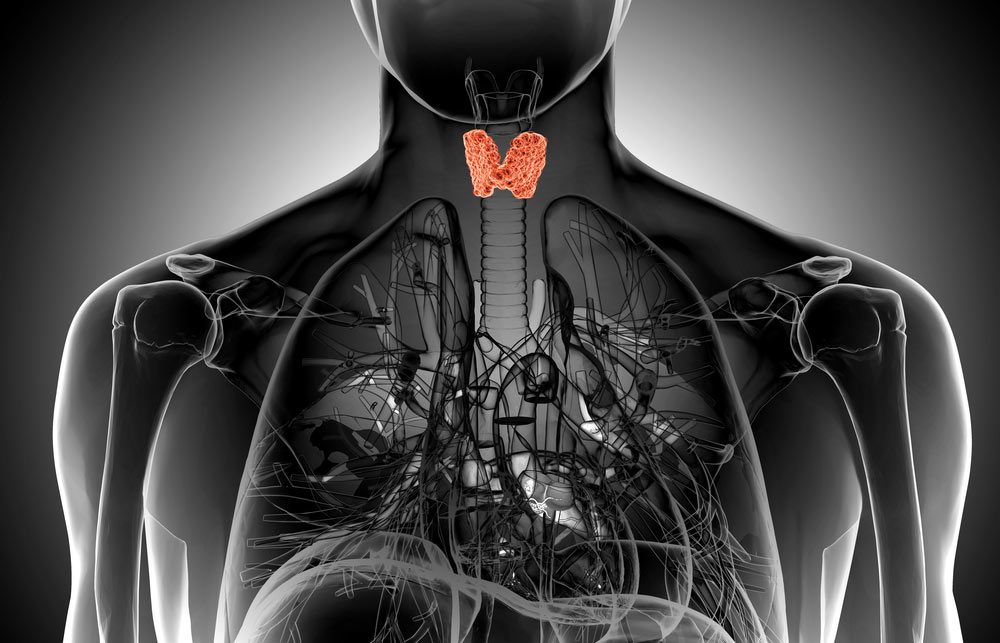Thyroid issues? Have you been told by your doctor that you have a dysfunctional thyroid gland? This tiny little organ packs a massive punch when it goes wrong. It’s a very complex gland that carries a lot of responsibility on its shoulders.
We’ve created a brief ‘get to know your thyroid’ blog to help you understand the role of the thyroid gland in everyday life.
What Is the Thyroid Gland?
The thyroid gland is a small (approximately 5 cm long) organ that produces, stores and releases thyroid hormones into the bloodstream to be sent around the body. It is made up of two lobes (left and right) and a central core (known as the ‘isthmus’) that connects the two lobes
When looked at from the front, the organ takes on a distinctive butterfly shape. The organ tissue is made up of many glands where the hormones are made and secreted.
Where Is It Located?
The thyroid gland is found at the front of the neck. It can be found below the Adam’s Apple – a prominent piece of cartilage that is easily felt in men, but not as easily in women. Sometimes with thyroid disease, the thyroid gland expands to create a lump at the front of the neck known as a ‘goitre’ (or goiter, pronounced ‘goy-tur’). This is a common sign of thyroid disease and highlights the location of the gland in the body.
What Does It Do?
As previously mentioned, the thyroid produces, stores and releases thyroid hormones into the body.
There are two thyroid hormones:
-
- T3 (or Triiodothyronine)
- T4 (or Thyroxine)
-
It’s easier to just remember these as T3 and T4. The scientific names are a bit of a mouthful, aren’t they! These hormones are made using a substance called iodine, that the body obtains from foods that we eat. Between the brain and the thyroid gland itself, the levels of T3 and T4 are closely monitored and maintained in balance. If levels of these hormones in the blood become too low or high at any one-time, other glands in the brain send the thyroid a signal to produce more or less, respectively.
T3 and T4 have some very important roles in the body relating to metabolism (i.e. how the body uses energy). Among their many functions, some of the most important include the control of:
- Breathing rate
- Heart rate
- Body weight and temperature
- Muscle strength
- Menstrual cycle (in females)
- The body’s nervous systems
What Can Go Wrong With It?
There are several conditions relating to thyroid disease. As a general overview, it is helpful to think about the organ as being either over-active or under-active:
Over-Active Thyroid Disease or ‘hyperthyroidism’ refers to a state where the levels of thyroid hormones in the blood are too high. This can lead to a group of symptoms including:
- Weight loss (despite a good appetite)
- Fatigue
- Increased sweating
- Heat intolerance
- Nervousness and anxiety
- Tremors
- Diarrhoea
- Heart palpitations / increased heart rate
- Hair loss
Under-Active Thyroid Disease or ‘hypothyroidism’ refers to low levels of circulating thyroid hormones. This can lead to a group of symptoms including:
- Weight gain
- Fatigue
- Cold intolerance
- Muscular aches and pains
- Constipation
- Low heart rate
- Dry hair and skin
- A slow, deep voice
It is interesting to know that the presence of a goitre is possible in both over and under-active thyroid disease.
As an osteopath, we take a keen interest in your health as a whole, including an in-depth knowledge of your medical history. Many people see us for help with pain, but as we’ve just highlighted, pain is not always about muscle damage or joint sprain. Having unbalanced thyroid hormone levels can also lead to pain in certain cases. If we suspect a thyroid issue when we are questioning and assessing you, we will ensure you are seen by your doctor at the earliest convenience to help rule it in or out.

